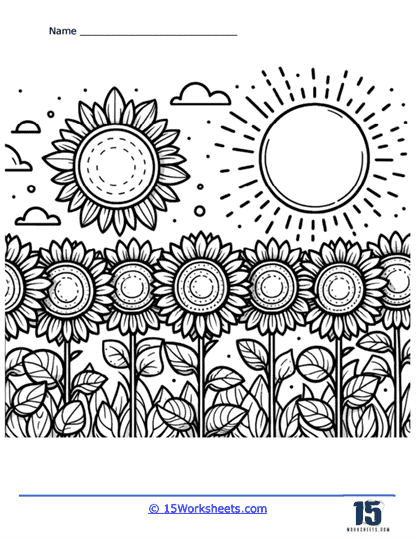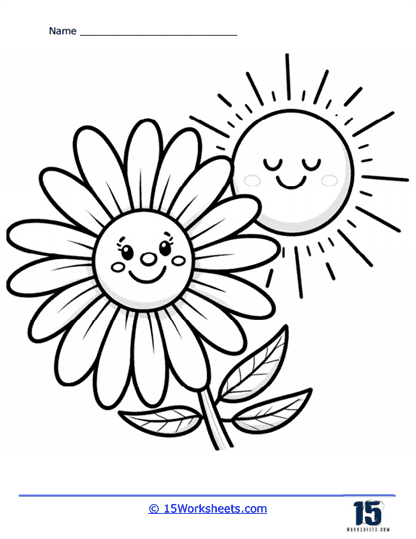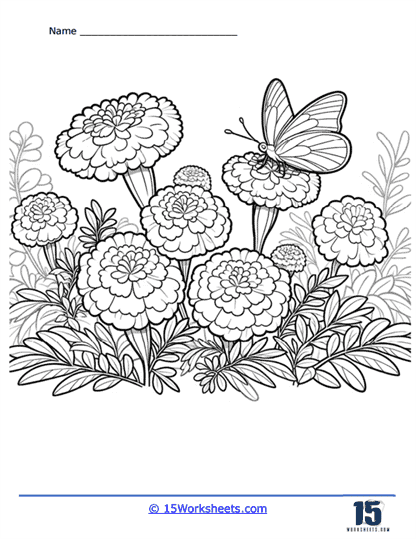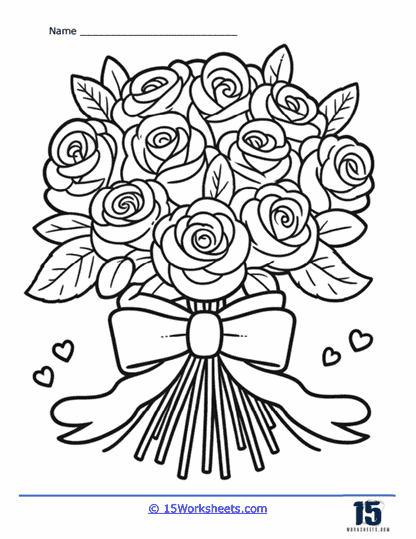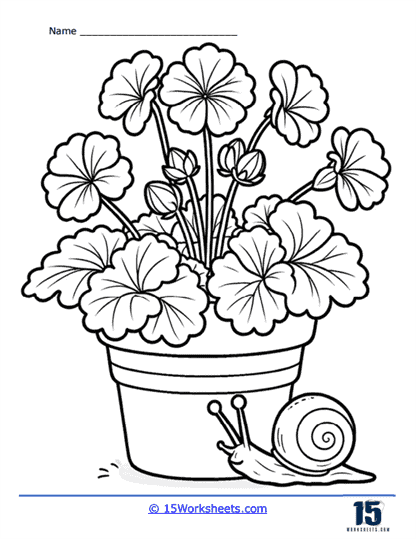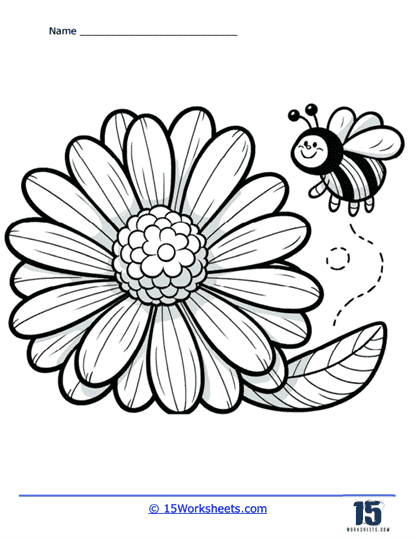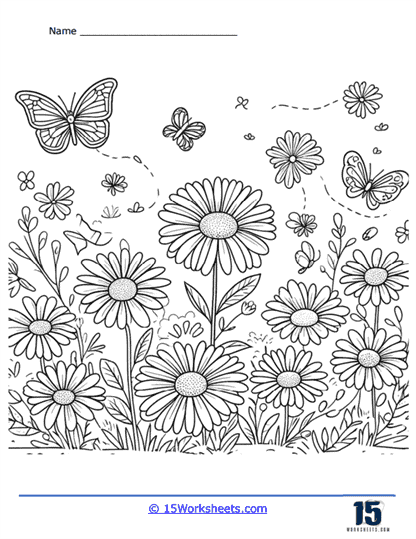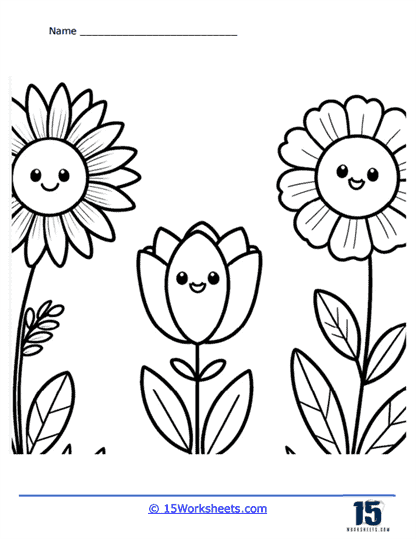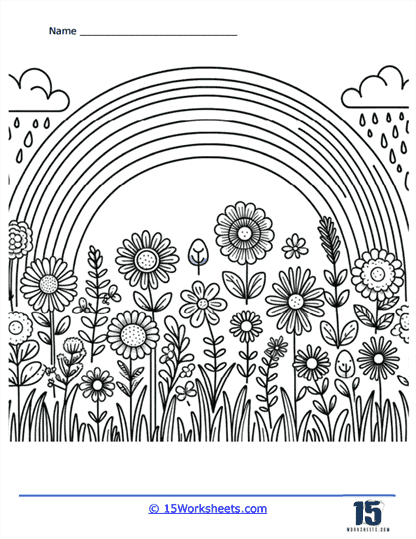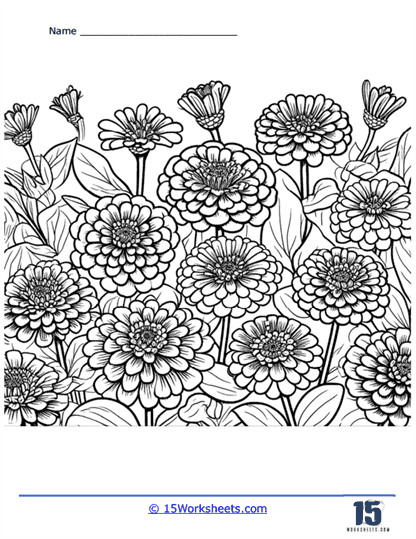Flower Worksheets
About These 15 Worksheets
These coloring pages are an engaging and educational activity that can captivate people of all ages. These pages feature various floral designs, allowing individuals to explore their creativity, relieve stress, and learn about different types of flowers. Flower coloring pages typically include a diverse range of floral species, intricate patterns, and complementary elements like leaves, stems, and background scenery, providing a rich and varied coloring experience.
These pages feature an array of flowers, from common garden blooms to exotic tropical species, each presenting unique coloring challenges. Leaves, stems, and background elements add depth and complexity to the designs, while mandala-style patterns offer a different kind of artistic engagement. Catering to various skill levels, flower coloring pages can be simple and playful or intricate and sophisticated. They also provide educational value, teaching colorists about different types of flowers and their characteristics. Whether for relaxation, creativity, or learning, flower coloring pages are a delightful way to explore the beauty of nature through art.
At the heart of flower coloring pages are the flowers themselves. These pages often depict a wide variety of flowers, each with its unique shape, size, and structure. Common flowers found on these pages include roses, tulips, daisies, sunflowers, and lilies. Roses, with their iconic layered petals, are a favorite for many colorists, offering opportunities to experiment with shading and blending to create a realistic appearance. Tulips, with their smooth, curved petals, provide a different challenge, inviting the use of bold, solid colors. Daisies, known for their simplicity and charm, often feature a central disc surrounded by delicate petals, perfect for those who enjoy detailed work. Sunflowers, with their large, bold blooms and distinctive seeds, offer a chance to use vibrant yellows and browns. Lilies, with their elegant, trumpet-shaped flowers, add a touch of sophistication and can be colored in a wide array of hues.
Beyond these common flowers, flower coloring pages may also feature more exotic or less familiar species. Orchids, with their intricate and often symmetrical patterns, provide a fascinating subject for coloring, challenging the artist to capture their delicate beauty. Hibiscus flowers, known for their large, striking petals, can be a canvas for bright, tropical colors. Lotus flowers, with their serene and symmetrical form, offer an opportunity to explore softer, more tranquil color palettes. Other flowers like peonies, carnations, and marigolds add variety and allow for exploration of different textures and color combinations.
In addition to the flowers themselves, these coloring pages often include detailed depictions of leaves and stems. Leaves come in many shapes and sizes, from the broad, flat leaves of a lily to the slender, pointed leaves of a tulip. Coloring leaves involves understanding different shades of green and how light and shadow can affect their appearance. Some leaves may have intricate vein patterns, requiring careful attention to detail. Stems, though often straightforward, can vary in thickness and texture, adding another layer of complexity to the coloring process. Thorns, tendrils, and other stem variations might also be included, providing additional elements to color.
They frequently incorporate background elements that enhance the overall composition and create a more immersive coloring experience. These backgrounds can range from simple, abstract patterns to detailed garden scenes. Some pages might feature a bouquet of flowers in a vase, allowing the colorist to explore different textures and materials, such as glass or ceramic. Others might depict flowers growing in a natural setting, with additional elements like grass, trees, and sky. Butterflies, bees, and other insects are often included, adding a dynamic element to the scene and providing more opportunities for creativity. Coloring these elements helps to create a cohesive and harmonious picture, bringing the floral design to life.
Another aspect of these types of coloring pages is the inclusion of mandala-style designs. Mandalas, with their circular, symmetrical patterns, often incorporate floral elements, creating a fusion of natural beauty and geometric precision. Coloring a flower mandala can be a meditative and calming activity, allowing the colorist to focus on symmetry and balance while experimenting with different color schemes. These designs often feature repeating floral motifs, inviting the use of gradients and transitions between colors to create a sense of depth and movement.
They also cater to different skill levels, from simple designs suitable for young children to highly detailed illustrations for advanced colorists. Pages designed for children typically feature larger, simpler shapes with bold outlines, making it easier for them to stay within the lines and develop their motor skills. These pages might include cartoonish flowers with smiling faces or whimsical elements that make the activity more engaging for young minds. For more experienced colorists, intricate designs with fine details provide a greater challenge and allow for the use of advanced coloring techniques, such as blending, shading, and highlighting.
Educational aspects can also be incorporated into flower coloring pages. Some pages might include the names of the flowers, helping colorists learn to identify different species and appreciate their diversity. Others might provide information about the flowers, such as their native habitats, symbolism, or uses in different cultures. This combination of coloring and learning makes the activity both enjoyable and informative, fostering a deeper connection with nature and botanical knowledge.





